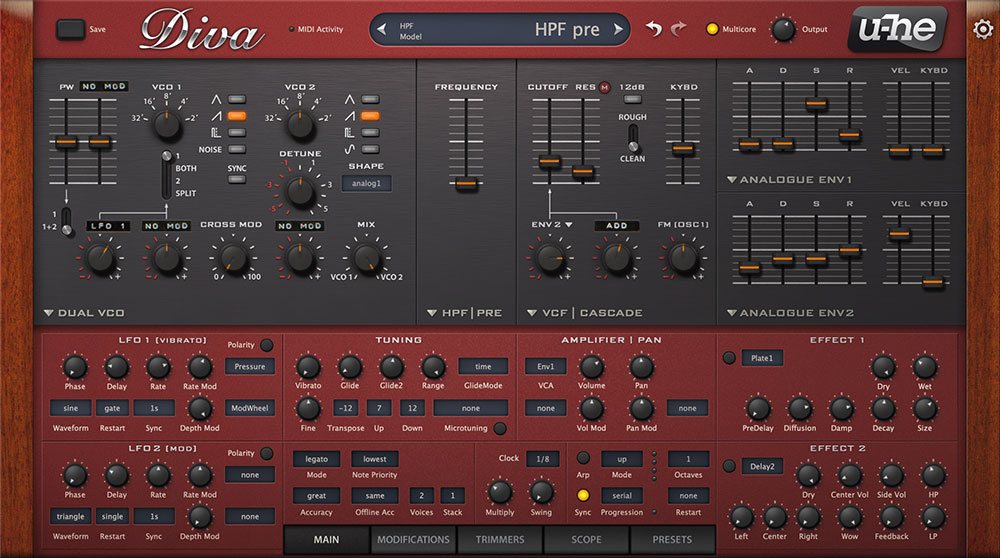

- #U he diva not mapping to instrument rack macro software#
- #U he diva not mapping to instrument rack macro License number#
- #U he diva not mapping to instrument rack macro mac#
On macOS versions prior to 10.13 High Sierra, try this first: Don’t worry, all your plug-ins will be re-scanned and available afterwards. You will probably need to clear your host’s plug-in cache. The exact procedure required to clear the cache depends on which host application you use. Host applications cache plug-ins so they can load faster and avoid re-scanning every plug-in on startup. The next time you launch your host, the new AU plug-in/s should finally show up.
#U he diva not mapping to instrument rack macro mac#
In such a case, please completely reboot your Mac once.
#U he diva not mapping to instrument rack macro software#
Sorry for the long question.On macOS 10.13 High Sierra and newer, it's possible that AU plug-ins don't show up in your host software immediately after installation. I would really really appreciate if someone could help me.
#U he diva not mapping to instrument rack macro License number#
I don’t have a license number so I can’t speak on the official Ableton forum. I have been searching for a solution to my problem for weeks and I can’t figure it out. I really don’t understand what he means in his answer : assign each sport on the drum rack with a sound? browser on the right? It may be because I’m not a native English speaker or because I’m stupid, who knows?

Then he brought this : “i figured it out, you have to assign each spot on the drum rack with a sound, so in the browser on the right you choose what you want and drag it to the drum rack on the device bar at the bottom, then the key you assign it to will play that sound when you press that key.” i can only hear the real input audio that i record, guitar/bass/vocals.” i also tried plugged my computer speakers(no real monitors yet) into a single monitor out and playing that way, no change. all the other play back is fine, i can hear myself through my interface(18i20) on the headphone channels while im playing and it plays back through the headphone channels after ive recorded. the double green bar doesnt move on that midi channel however. i can record onto that midi channel when i press the keys, i can see it leaving the markers in the track display, and when its played back the yellow bar down on the drum rack blips as if it should be playing a sound. “when i add a drum rack instrument to a midi track and select computer midi keyboard i can type and i can see the yellow input bounce up when im typing so i know its receiving input. This problem has been mentioned by this user and this is what he says : I begin with Ableton Live but I’m already stuck. There are plenty more Ableton Live tutorials where this one came from. So do you have something to say or ask? Simply leave me one. Or else you always need to turn off the computer MIDI keyboard function to use all your Key mappings.Ĭomments are welcome. If you intend to use both the computer MIDI keyboard for playing as well as Key mappings, make sure you don't assign the keys needed to play. Once finished, click on the Key button again to leave the Key Map Mode.Since you only have keys available to map, assigning a parameter with a minimum and maximum value only allows jumping between those two values without any steps in between. You can set the Min and Max for the parameter if available. In the Browser (left) you will see the Key mappings you made. Repeat the steps with whatever else you want to map.Click on the parameter you want to control, then hit the key on your computer keyboard you want to control it with.Everything that's mappable will now be displayed in orange. Turn on Key mapping by clicking on the Key button in the upper right hand corner of Live or hit Cmd + K (Mac) or Ctrl + K (Windows).This is also possible with the computer keyboard in which case it's called Key mapping. MIDI controllers cannot only be used to play MIDI instruments, but also to control parameters in Live. C and V let you adjust the incoming note velocity by intervals of twenty.Pressing Z lowers the octave range while X raises it.The black keys on a piano correspond to the upper letter row of computer keys (W, E, T, Y, U, O - on an English keyboard).The centre row of letter keys on the keyboard will play notes corresponding to the white keys on a piano, beginning with A playing C3.Another press of the key turns it off again.

To turn it on, either click on the icon or press the M key.


 0 kommentar(er)
0 kommentar(er)
